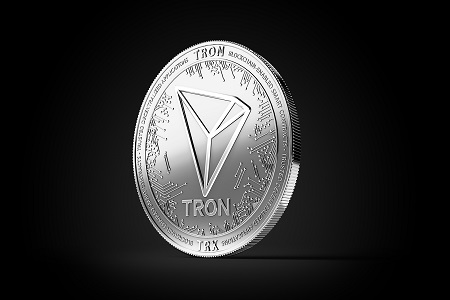Last updated on July 11th, 2023 at 11:33 pm
Tron started as an ERC20 token based on the Ethereum blockchain and changed in 2018 when it migrated to its own blockchain.
At the moment, Tron is a blockchain like Ethereum that is dedicated to solving issues noticed in the latter. It is not news that many blockchains that came after Ethereum are designed to nip the problems that users face in the Ethereum chain in the bud. Developers can create their dApps, without having to worry about high transaction fees or low scalability. These areas build the underlying principle of the Tron blockchain. Like every other chain out there, Tron has a utility token, and it is the TRX, which is used to enjoy the features of the ecosystem.
Tron has actively collaborated with other leaders in its ecosystem to drive massive adoption. At the moment, Tron has an active partnership with Refereum, which is a gaming platform that allows streamers and viewers to get TRX. In Samsung’s Blockchain Keystore, Tron is an active chain, allowing its users to access decentralized apps running on Tron through Samsung.
Using MetalPay, Tron holders can make purchases or convert fiat currencies to TRX.
Tron’s Architecture
When it was an ERC20 token before 2018, Tron was on the Ethereum chain. Immediately after it created its own blockchain, holders were told to swap their ERC20 for the TRX that was based on the Tron network.
Tron is different from the Ethereum network because it doesn’t use the PoW consensus mechanism, but uses Delegated Proof of Stake.
This network is divided into three crucial layers:
- Storage Layer
- Application Layer
- Core Layer.
Storage Layer
The storage layer divides the blockchain data and stores them with their state data. State data ensures that the smart contracts’ status is secure.
Application Layer
The second layer allows developers to create their decentralized apps and enjoy the features that Tron offers. As long as it is a decentralized app, it can be built on this layer.
Core Layer
This layer is where the magic happens within the Tron network. It collates the instructions that have been written in programming languages like Solidity and Java, then transmits the instructions to the Tron Virtual Machine, where it is executed.
Delegated Proof-of-Stake Consensus Mechanism
As earlier mentioned, Tron’s consensus mechanism is the Delegated Proof of Stake, which means that consensus is only reached by a randomized set of 27 “super representatives”. Their job is to verify the transactions and create the blocks.
To ensure that the system is not rigged in anyone’s favor, a new set of super representatives are chosen four times in twenty-four hours, and the process is randomized. Those that are chosen validate the transactions and get TRX in return.
The other features that are added to the network are different types of nodes, which are Solidity nodes, full nodes, and witness nodes. Solidity nodes interact with the solidity language and instructions. The job of the full nodes is to transmit the blocks and the transactions in them. As for the witness nodes, they propose blocks and vote on protocol decisions.
Because it is not a PoW chain, the native token of the Tron network can’t be mined. Like its DPoS counterparts, a new token is earned once old tokens are staked.
If you would like to read more articles like this, follow DeFi Planet on Twitter and LinkedIn.





















